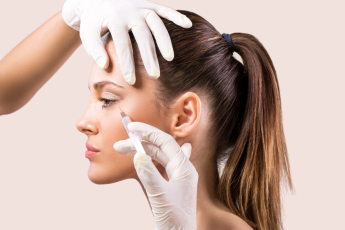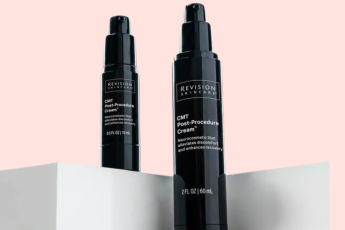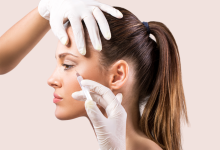Summer is finally here and many of us Midwesterners are anxious to spend as much time as possible basking in the cherished summer sun. After all, we deserve it with the brutal winter we’ve had, right? Some people may be thinking, I am not nearly tan enough for bathing suit season, maybe now is a good time to go to the tanning bed, Right? Wrong! There is never a good time to go to the tanning bed!

Here are 5 top reasons why you should avoid tanning beds at ALL costs:
1. Your risk of melanoma increases by 75 percent when you use tanning beds before the age of 35.
2. Last year, the International Agency for Research on Cancer shifted indoor tanning devices to the highest cancer risk category: “carcinogenic to humans.” (They were formerly classified as “probably carcinogenic to humans.”)
3. Tanning can be addictive. For some people, UV radiation can have a drug like effect; they feel dependent on it and can experience withdrawal symptoms, says David Fisher, M.D., Ph.D.
4. Not only are tanning-bed users more vulnerable to melanoma, they’re also 2½ times more likely to be diagnosed with squamous cell carcinoma and 1½ times more susceptible to basal cell carcinoma.
5. If you want to stop or prevent premature aging, steer clear of tanning beds. Tanning beds cause noticeably aging skin, such as wrinkles, fine lines and age spots. Tanning can also create a “Leathery look to the skin which can add years to a person’s appearance.
A Tan may look Good but is it Good for you? More Dangers of Indoor Tanning.
Indoor tanning exposes users to two types of ultraviolet (UV) rays, UV-A and UV-B, which damage the skin and can lead to cancer. Indoor tanning is particularly dangerous for younger users; people who begin indoor tanning during adolescence or early adulthood have a higher risk of getting melanoma, likely because of increased lifetime UV exposure. In fact, every time you tan you increase your risk of getting melanoma.
Sunburns and tans are both dangerous because they cause DNA damage to our skin. Your risk of developing melanoma increases after just one blistering sunburn.
Squamous cell cancer increases based on your lifetime exposure to UV rays. Basal cell carcinoma risk increases based on the combination of intense sun exposure and lifetime exposure to UV radiation. UV radiation comes from the sun…and from tanning beds.
You cannot get a “Safe Tan” from a Tanning Bed.
The FDA and the CDC both suggest that you avoid using tanning beds in order to prevent developing skin cancer. There really is no such thing as a safe tan from a tanning bed. In addition to the risk of developing skin cancer, exposure to UV rays causes your skin to age prematurely.
It’s time we rethink our position on the standards of beauty. A Tan really is not beautiful; it is a walking advertisement for skin cancer.
This might ring a bell: “You only get the healthy rays in tanning beds,” or “Tanning beds give you a ‘base tan’ to keep you from burning.” The tanning-salon industry wooed many of us with these marketing claims when UVA rays — the ones tanning machines mainly use — were thought to be safe and only UVB rays from the sun were believed to be harmful.
Since then, we’ve grown wiser. Definitive research has now proven that both UVA and UVB rays can cause skin cancer. (UVA rays have been specifically linked to melanoma.) Still, about 30 million people go tanning every year, about 70 percent of whom are young women. Tanning salons outnumber even Starbucks and McDonalds in some of the largest U.S. cities, according to a San Diego State University study.
Still don’t want to kick the habit? Here’s why you must kiss the bed good-bye!
Help educate our youth about the Dangers of Tanning Beds!
Tanning Beds and Teens.
Tanning beds are not safe. Both UVA and UVB rays cause cancer. Tanning beds often exceed “safe” UV limits, despite the claims of the salon. Teens are at special risk because their bodies are undergoing such accelerated growth rates that their cells are more prone to the damage of the UV radiation. By routinely tanning their skin starting at a young age, teens put themselves at greater lifetime risk of developing skin cancer. Contrary to popular belief, it is possible to get sunburn in a tanning bed, and your eyes are at an increased risk of developing cataracts and corneal burns.
UV Radiation
UV radiation comes from the sun and from tanning beds. UV radiation damages our skin and adversely affects our immune system. As previously mentioned, one blistering sunburn increases your risk of developing melanoma, which is a very dangerous and lethal skin cancer. You are also 2.5 times more likely to develop basal cell carcinoma and 1.5 times more likely to develop squamous cell.
Statistics
In the United States, indoor tanning is thought to cause about 419,000 cases of skin cancer every year. For comparison, smoking is thought to cause about 226,000 cases of lung cancer every year.
According to the 2011 Youth Risk Behavior Surveillance System, the following proportions of youth report indoor tanning—
• 13% of all high school students.
• 21% of high school girls.
• 32% of girls in the 12th grade.
• 29% of white high school girls.
According to the 2010 National Health Interview Survey, indoor tanners tended to be young, non-Hispanic white women.
• 32% of non-Hispanic white women aged 18–21 years reported indoor tanning. Those who reported indoor tanning device use reported an average of 28 sessions in the past year.
• Among non-Hispanic white adults who used an indoor tanning device in the past year, 58% of women and 40% of men used one 10 times or more in the past year.
• Non-Hispanic white women between the ages of 18 and 21 years residing in the Midwest (44%) and non-Hispanic white women between the ages of 22 and 25 old in the South (36%) were most likely to use indoor tanning devices.
http://www.cdc.gov/cancer/skin/basic_info/indoor_tanning.htm
http://www.doctoroz.com/blog/susan-evans-md/dangers-tanning-beds
http://www.webmd.com/beauty/sun/5-scary-facts-about-tanning-beds





